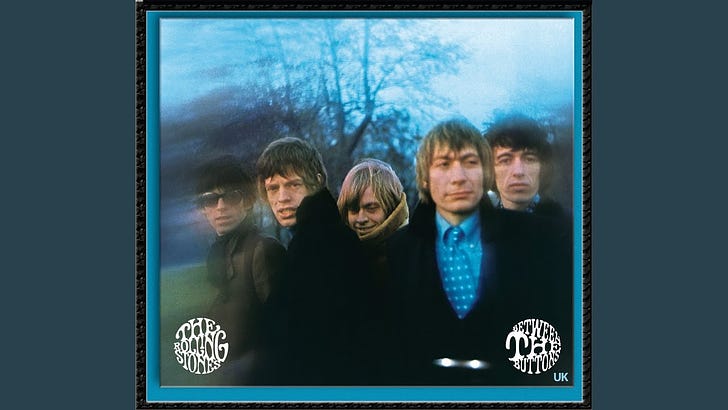England swings like a pendulum do
Bobbies on bicycles two by two
--Roger Miller, 1965
There was a time when if you asked me to name my favorite Rolling Stones album and I was feeling slightly contrarian, I'd say, Between the Buttons. Paul Williams engaged with the album in the early Crawdaddy magazine, when I was in high school, and I admired the robust respect with which he led you through his thinking. Because it was a really different kind of Rolling Stones album, one whose British version, the one we are discussing here, had no hits.
Between the Buttons was both the fifth and the seventh album by the Rolling Stones. No sleight of hand here; it was just that even in early 1967, British and American divisions of the same record companies did business differently.
Both adhered to the 12 song, six tracks to a side LP format. But in England, singles remained their own distinctive revenue stream. In England, "Ruby Tuesday" and "Let's Spend the Night Together" was a stand-alone two-sided hit …
Keep reading with a 7-day free trial
Subscribe to Critical Conditions by Wayne Robins to keep reading this post and get 7 days of free access to the full post archives.



